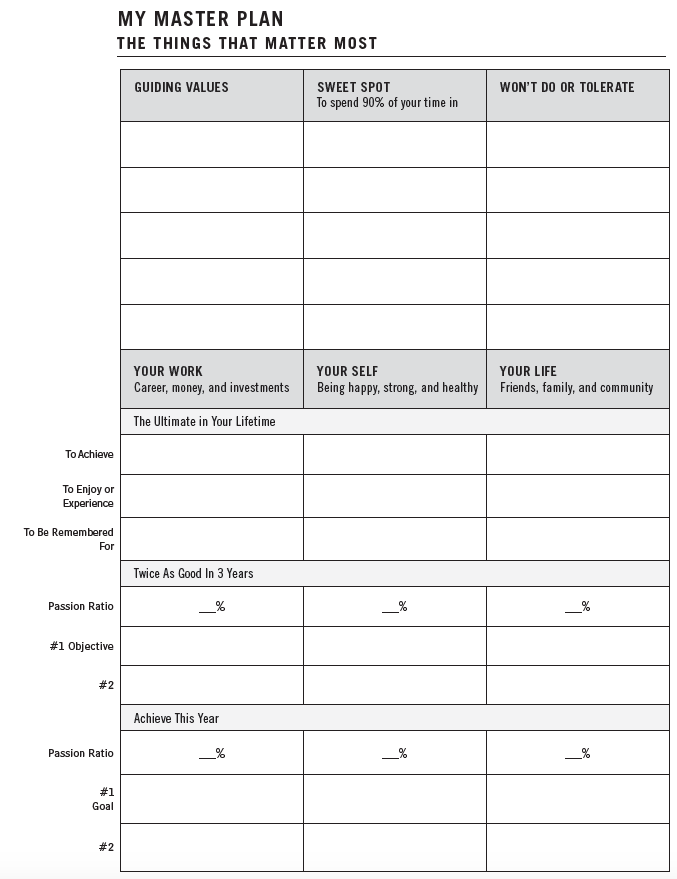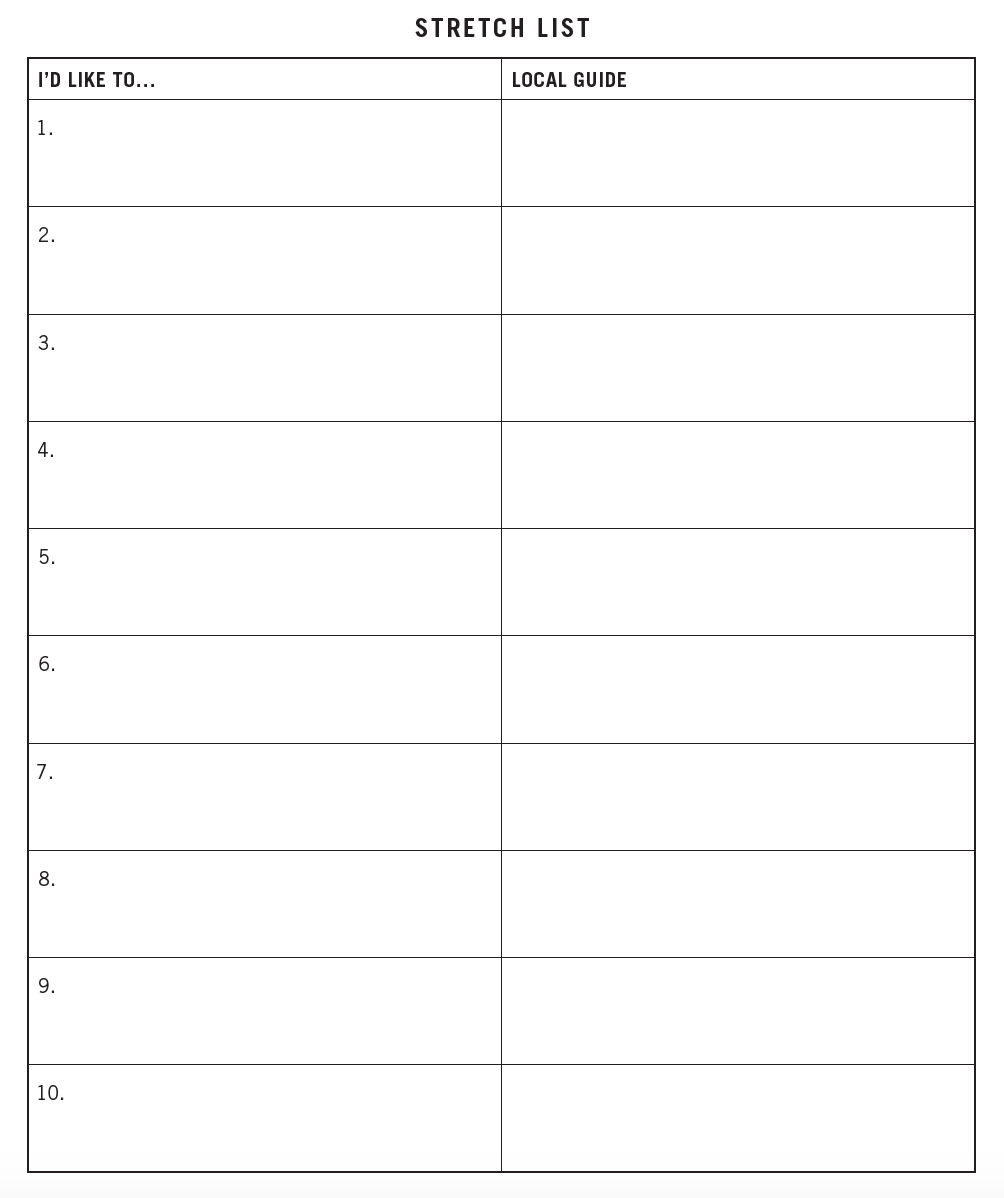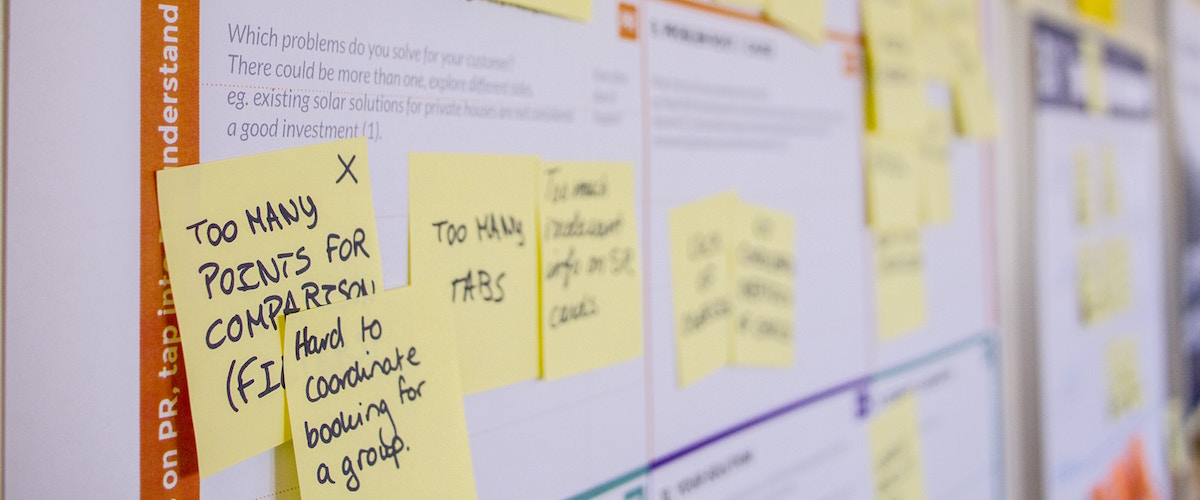12 Tips for Better Business Meetings
Business meetings can foster collaboration, innovation and action - yet most employees gasp with frustration at the thought of another meeting.
Stop encouraging meeting mediocrity and, instead, use every meeting to make things happen with these tips:
- Ask yourself, does this meeting really need to happen?
- Select participants wisely – does everyone really need to be in the meeting?
- Provide an agenda to participants in advance.
- Clearly determine and communicate the intended meeting outcomes so that participants understand the purpose and benefits of meeting.
- If attendees are required to review information in advance, send it to them prior to the meeting; do not waste time reviewing documents during the meeting.
- Establish standard meeting etiquette that is used consistently. For example, start and end on time and give everyone the opportunity to contribute to the discussion.
- Instill an action-driven culture even during meetings.
- Document assigned actions and the person or team responsible for each action; everyone needs to leave with meaningful things to accomplish.
- Communicate when actions must be completed; follow up on each action to ensure completion.
- Have someone take notes – ideally a support person so the CEO or executive team can think rather than write or type.
- Encourage collaboration but stay focused, otherwise meetings will always take up more time than allotted.
- Recap actions at the end and then send a summary to everyone within half an hour.
The Issue with Company Core Values
Whenever I have a discussion with a new CEO client, and the topic of company core values comes up, I absolutely cringe.
People are usually excited about their vision, mission, and core values. Often, they have spent hours and days getting them clear. They are so proud of them – like the kid coming home from kindergarten with their first piece of artwork.
Unfortunately, most of the time, the work people do on their company core values is the quality of that kindergarten art...when they should be worthy enough to hang in a gallery.
“True leaders don't look at just the outward appearances in the selection of team members, they look at one's core values and heart.” - Farshad Asl, Author, No Excuses Mindset
The root of the problem is that company core values are usually misunderstood. Whether people do the work themselves or get an expert to help them - they often end up with something that is nice, but far from what is core to the business.
These values end up becoming business or marketing strategies. And often something even less relevant - that list of "favourite words" brainstormed by 20 people in a boardroom that get mashed into a concept that doesn't represent the core values of your business at all.
I was one of these people when I started 20 years ago. Since then, thankfully, I’ve had some great insights and learning that have helped me better understand company core values.
Core values are the core, non-negotiable belief and operating systems that people must have to be in your company or to partner with you, externally. Absolute non-negotiables, and the list by which you decide whether to hire or fire someone, assuming they are good at their work.
It’s not a ‘what I want to be when I grow up’ list - it’s an absolute must have. It represents the core of your organization that people who work with you should appreciate and share.
The most powerful and effective way to get your core values is to have the founder and a few key people in the room.
Company Core Values Exercise
- On the left-hand side of a page, make a list of five people who are absolutely amazing at their work and so delightful to work with, you’d like to replicate them. Jim Collins has an exercise called Mission to Mars where you think of the five people you’d send to Mars to start a new division of your business. You’d never be able to talk to them, but you trust that they would do it right.
- On the right-hand side of the same page, write a list of names (or initials) of the five people who are excellent at their work but are a nightmare to work with because they just don’t fit in the culture. They are likely no longer with the company – or should be! I call these Toxic A Players.
- Next, look at the attributes of both the spectacular people and the nightmares.
- What did the great ones have, and what are the others missing?
This will help you to triangulate your core values and get down to the essence of what is required.
This could take 30 minutes or a few hours. Do it over a couple of sessions, sit on it, run it by a few other people. Once you have something that is close - three to seven words that describe your core values - do the acid test.
Run these core values through the list of five and five, and make sure all the people on the left side of the page have them all – at least a nine out of 10 level.
The people on the right of the page would seriously be missing at least one of the core values.
You’ll find that some of the Toxic A's have some of them (you did hire them in the first place) but they’ll have serious gaps on one or two. If not, go back to the drawing board until you get it right because those people should be filtered out if you get it right.
To summarize, core values are the required behaviours or quirks of your unique view of the world – and it is the list by which you’ll hire – or fire – high performers and make and implement important decisions.
Core values are not just fluff that make you sound like everybody else, so make sure you get it right.
The Challenge
- If you are going to create core values, please do them right (so someone like me doesn’t have to come in and fix them for you!)
- If you already have core values, even if you’ve printed them out and put them on the wall, go and re-visit them. Are they clear and binary enough to represent what your company is about?
- Finally, if you have any of those Toxic As (high performers that don’t fit in your company) make sure you have an action plan to address that in a reasonable amount of time, otherwise people around you will translate the core values based on your actions and behaviours, not necessarily the words on the page.
The Problem with Open Innovation
“There is no innovation and creativity without failure. Period.” - Brene Brown, researcher, best-selling author
 My family and I recently stopped for dinner in a small town, on our way back from a weekend adventure – a bit of vacation and time racing cars at the race track. The restaurant had run out of napkins, and somebody with a creative, innovative mind made the effort to tear pieces of paper towel from the bathroom and then write the name of the restaurant on every single piece.
My family and I recently stopped for dinner in a small town, on our way back from a weekend adventure – a bit of vacation and time racing cars at the race track. The restaurant had run out of napkins, and somebody with a creative, innovative mind made the effort to tear pieces of paper towel from the bathroom and then write the name of the restaurant on every single piece.
Beautiful creativity open innovation - but also horrible and not what their brand is all about. If you’re going to go through such a painstaking effort, at least cut the paper properly, and write neatly. This was just awkward and weird.
Someone made a mistake in not ordering enough napkins – fine.
Someone had a passion to fix the problem – fine.
But they didn’t have the filters about appropriate innovation and made the situation worse.
In this particular case, this well-meaning person would have been better off with just pieces of paper towel, without the writing.
Now, the problem isn’t with the person – they did the best they could, and their initiative is actually quite impressive. A culture of open innovation is great. However, it can go horribly wrong if management doesn't provide context, proper guidelines, training, and oversight for what makes the brand effective.
Open Innovation in Context
You want people to be creative and to innovate but they first need to understand the bigger picture, the strategy and the brand - and have the parameters, tools and training to do their best work, in a way that ensures the customers get what we intended.
It’s also important to leverage good ideas and have forums or opportunities for this creativity to be put to work. I never would have come up with that idea! This speaks to a different kind of mind that could be highly valuable.
The Challenge
- Think about the areas of your business where you are under-utilizing people’s ideas. Areas where people have had creative ideas and, with some guidelines and context, could come up with better ideas and ways to improve your business.
- Where are people innovating in ways that, in their view of the word, looks brilliant – but based on the business’ bigger picture, are horrific?
- Where are the handwritten logos on napkins in your business?
Work Life Planning: Plan, Plan & Plan Again
We have goals of where we want to get to, and great plans. But of course, that's not how it happens. We end up here, there, and everywhere, when all we need to do is continually recalibrate once every quarter, and we'll get to our goals.
The question is, “How disciplined are you about planning and regularly re-planning for your work, self, and life in terms of what you want to achieve?”
Most people in business have clear goals and objectives in their company. If you don't, maybe you should start with that!
But where we often fail is in our plans for yourself and our life. And that's why I created the master plan. Even when you do have a great plan, sometimes things go sideways.
"Everyone has a plan till they get punched in the mouth." - Mike Tyson
You can be going along when life throws you a curve ball - and you’ve got to reset or rethink your plans. That's why you can start with a plan but every quarter, you have to refocus.
Key Point - You've got to have a simple, all-encompassing plan - ideally on one page. And, in this case, the master plan for your work, yourself, and your life.
You know you need to work on this if:
- Logic just tells you, you should. And you should have an integrated plan that pulls it all together
- You have elaborate, long-winded plans, but don't reference them very often
- You don’t consistently achieve the goals you envision
- You get sidetracked by sudden inspirations
- You consistently over-achieve in one area (likely at work), but under-achieve or sacrifice too much in terms of self and life.
Work Life Planning Tool
Here is the master plan tool. It is extremely simple yet integrates everything that matters to you in one spot, and allows you to recalibrate.
At the end of the year, you do the annual review (see the download link at the bottom of the post to access all the worksheets) where you answer questions about the three categories of your life: work, self, and life and how things went, with some ideas on what might make this year better.
Then you switch over to the master plan and reset your plan for your life:

Across the top, you'll find three things:
- Your guiding values. If you've thought about core values and values you live by, those go there.
- Your sweet spot (which we talked about earlier in the book) is the place where you absolutely thrive and do your best work.
- The things that you won't do or tolerate. This taps back into the principles of teaching people how to meet your standards.
So those are overarching principles.
Then you get into three different time frames.
- The ultimate in your lifetime
- What you want to achieve to be twice as good in the next three to five years, and
- The next year.
It's super important that you get this sorted. It's also a great activity to do with your family members or people close to you, to make sure you're all aligned around what matters for your family.
The key with this master plan is to take into account work, self, and life, and to make sure that you always do the things you need to do for yourself, because you're the thing that holds it all together. You're the glue, you're the structure - and if you don't get what you need for yourself, the rest is going to fall apart.
Then there's the quarterly reset. Every 90 days, go back and do the page where you reflect on the quarter. "Hey, how did it go? What would make it better in each of those three categories work, self, and life?" And then you have a new plan for the quarter. "How much passion do I want to allocate to work, self, and life? What's my number one goal in each of those areas?"
If you dare be so bold…
- You might have your second and third goal in each area and then
- Take a look at the toads that might be building up - the habit that you want to start (likely one of the habits out of the book) – and what you want to stop.
And then there's room for the action plan, to do what you need to do to move forward.
These tools are actually quite simple. It's a matter of making the time, and making it a priority to go and sit, to look at what really matters in those three areas and make sure that when you look at your master plan at the end of your life, you're not going to say, "Woulda, coulda, shoulda." You're going to say, "Been there, done that, and I'm thrilled with how I lived."
On a quarterly basis, it's the same thing. It's about being clear that if this is what I accomplish this quarter - forgetting everything else that may or may not happen - I'm going to feel very good about how I've lived my life, in every aspect of life.
The Challenge
- Download and draft your master plan, and your plan for the next quarter.
- Spend some time, think about them.
- Run them by a friend, run them by a family member, and make sure that they make sense.
At the end of the day, the most important things should be on your plan. And don't worry, all the other random things will continue to show up. But you need to stay focused on the biggest opportunities to make your life great, your work great, and for you to feel great about who you are.
Keep growing. Keep learning. Keep driving.
Change Catalyst
Catalyst | noun | cat·a·lyst | ka-tə-ləst | An agent that provokes or speeds significant change or action - Merriam Webster
About a month ago I was humbled when someone who had attended one of the workshops on my book Your Oxygen Mask First shared with me how the book had impacted his life – had actually, he said, saved his life.
As I saw the emotion on his face I realized there was more to it.
Carmine had been very successful entrepreneur who’d recently sold his business. He realized that he had got himself into a very bad place, mentally, from all the challenges and excitement of building and running a great company, and had done some damage.
As we talked he could see that he needed to do something about it and get to a better place.
One of the gentlemen in the workshop told with him about a great 10-day program where he could go and really look in the mirror, do a personal re-set, and come back with a better mindset.
Note: If you want to learn more about these types of programs, let me know – there are many great ones out there.
A Change Catalyst
 The second part of his story is that he’d had very damaged relationships with members of this family, particularly with his mother. He had only seen her once in 25 years and the last time was more than 10 years ago.
The second part of his story is that he’d had very damaged relationships with members of this family, particularly with his mother. He had only seen her once in 25 years and the last time was more than 10 years ago.
No wonder he was excited to send me a photo of him with his Mom, and his son – her grandson who she was meeting and getting to know.
I want to be clear that I’m not taking credit for this. The book was a catalyst for him to get on this path, to make things notably better. And most of us need a catalyst to open our eyes and hearts, to realize we need to do something differently.
Here’s a direct quote from Carmine:
“I heard Kevin speak about his book soon after the emotionally charged sale of my company, and the timing could not have been better. After completing his Resilience Self-Assessment, it was clear I had some work to do on dealing with my emotional junk – and so I did. Your Oxygen Mask First provided the catalyst that has led to profound changes in my life, and in my personal relationships and, for that, I am so grateful. Thank you, Kevin!”
How do we get there?
We often find ourselves in situations that we tolerate – that become ‘normal’ over time – when we are super-consumed with all the demands of running a business, and a life. We convince ourselves the situation is not that bad and slip into accepting dull mediocrity – or outright pain - because we don’t have the bandwidth to take on one more thing – especially fixing something that doesn’t work, and so we put up with it, and take the path of least resistance.
But if we don’t deal with the Issues, they become great, big, ugly toads (chapter 5 in my book) until they smother us and affect our well being.
The Challenge
- If there are things in your work, or your life that you are tolerating, or are bothering you, you need to know there’s a solution for everything
- If you are stuck, reach out. We know many people who can help in different ways.
The challenge most of us have is that we accept the dull pain in the back of our head with a belief that it’s the way it’s supposed to be. There are lots of challenges and many things, in life, that are hard. But there are also things you can influence or have some control over.
It’s a conscious choice to put up with it – or improve it. It’s up to you.
Push Yourself - Keep Going For It
This post is inspired by my grandmother, Betty Howett. At 81 years of age, she went back to university. She'd been an entrepreneur her whole life, had businesses all across Canada, lived an amazing life, a great adventure. But when she got into her 80s, she was really curious about the religions of the world, and went back to university to study theology. I'm fortunate to have that DNA and I love to keep learning and growing. But I've noticed, the older I get, the harder it seems to get.
So, we're going to talk about what you need to do to push yourself and "keep going for it". Those are the words that my grandmother used to say - and my mother still says to me this day - "Just go for it, keep going for it, keep trying new things, keep expanding your adventure."
How good are you at regularly stretching your personal limits? You can build your confidence as a leader by consciously choosing to do things you think you can’t do, and push yourself towards your true potential.
"We don't stop playing because we grow old, we grow old because we stop playing." - George Bernard Shaw
And it's easy, as you get more established and older in life, to stop taking risks and stop stretching yourself. It's also a sure-fire way to have your soul and your brain start to die.
Key point - Keep creating opportunities to be a novice learning from masters - to be someone in a situation where you're very uncomfortable, probably over your head, but you've got an expert guide to help you figure it out and grow stronger, as a result.
You really need to work on this if:
- In the past six months, you haven't been uncomfortable and once thought, “How the heck am I going to make it out of this alive?” or get out of this situation intact
- In the past 12 months, you haven't tried something new, and then been a spectacular failure
- A challenge makes you squeamish, you likely back down, and/or you haven't pushed through
- You haven't recently felt like the least competent person in a group
- You would love to push yourself to try something new only if someone would teach you, or there was an easy way to make it happen.
Stretch List
As we get more successful - as CEOs, executives and leaders - we often get into a comfort zone and a rut, and we don't put ourselves back into that amateur, novice scenario. And as a result, we can grow weaker, even though we get more experienced.
The solution for this and is something called the Stretch List.
Many people will have a bucket list of cool things they want to experience in their life - the Stretch List is a similar concept that focuses on ways you'd like to stretch yourself and expand your capabilities. The key is to apply it in your work, for yourself and in your life.
Local Guides
One of the major habits that I suggest is to always find a local guide. Look, we're not 17-year-olds anymore. We're experienced people that have lots of great things going for us. Let's not waste our time. Find a local expert or a local guide in whatever it happens to be.
As an example, my son Braydon and I were in London, and we wanted to learn photography. He's really passionate about it and I wanted to learn, as well. So we found a photography teacher in London, who took us all around the city shooting pictures, teaching us the technical aspects of amazing photography. It costs us a bit of money but in four hours, we learned a ton and had a great time too.

The Challenge
- Create a Stretch List - Fill out the first column on your Stretch List.
- Find local Guides - Fill out the ‘Local Guide’ column on your Stretch List to indicate where you would like a guide. Who would be a local guide? Now, if you don't know a local expert, who do you know that could help you find one? Pretty well guaranteed, there's a local expert for everything you want to do.
- Take a step forward - Write down the number one thing you want to do to stretch yourself, and then reach out, make a call or send an email, to find someone that you can do it with, or learn from, and get it booked.
Summary
You have to push yourself out of your comfort zone on a regular basis because that's where the magic happens. You learn, grow, and keep your soul agile and moving ahead when you're doing things that stretch you.
Unfortunately, as you get established and comfortable, you're less likely to do it. What you want to do - as Liz Wiseman talks about in her book Rookie Smarts - is continually go back to that rookie mentality, and that rookie state, where there are massive amounts of learning – where you're stretching and expanding who you are, at the core, so that you don't become stale, stagnant, and ineffective as a leader.





